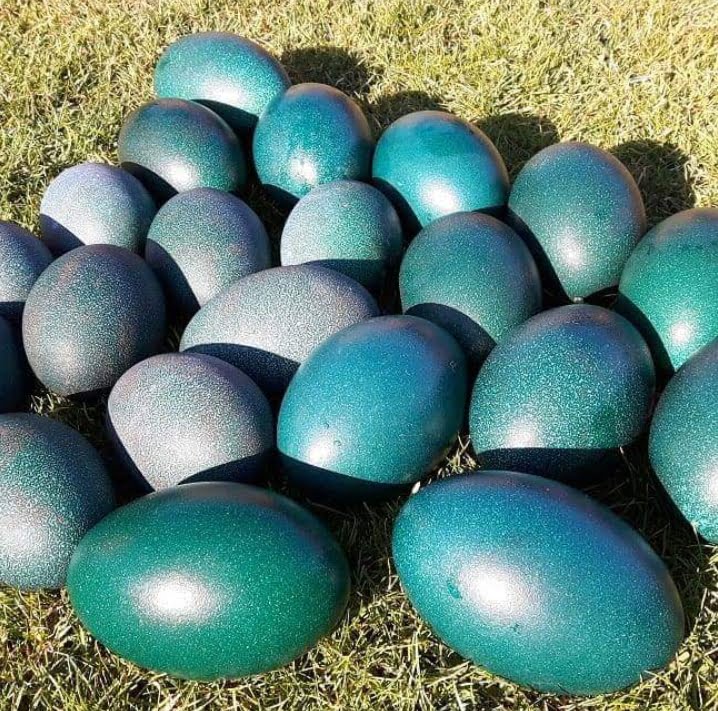A female emus lay eggs during their breeding season, which typically occurs between May and November in Australia.
They can produce between 10 to 50 eggs in a single season, laying one egg approximately every 3 to 4 days. The eggs are large, dark green to bluish-green, and weigh around 1 to 2 pounds each, comparable to a dozen chicken eggs in size.
Once the female lays her eggs, she does not participate in incubation; this responsibility falls to the male emu. The male incubates the eggs for about 50 to 56 days, during which he does not eat or drink, relying on stored body fat.
He carefully turns the eggs several times a day to ensure proper development. After hatching, the male continues to care for the chicks, which are precocial and can fend for themselves shortly after birth.
A nest of nine coastal emu eggs was found in a state forest during a routine pre-harvest inspection.
Coastal emus are endangered, with fewer than 50 believed to remain in the wild.
A “really exciting” discovery of endangered coastal emu eggs has wowed conservationists and forestry workers.
The nest was discovered during a recent routine habitat inspection ahead of forestry harvesting in the Clarence Valley on the NSW north coast.
Senior field ecologist Joshua Brown said nine eggs were discovered in a protected area next to the harvesting zone.
He said it was the first emu egg discovery he had seen in his 18-year career.
“It’s an amazing find, everyone within our team and the broader community have been talking about it,” he said.
an emu walks through the bush
A coastal emu captured by photographer Jimmy Malecki on his property in the Clarence Valley. (Supplied: Jimmy Malecki)
The coastal emu is an endangered species with fewer than 50 estimated to remain in the wild.
The population lives in a small area between Evans Head and Red Rock, to the east of Grafton.
Mr Brown said a 100-metre buffer zone had been enforced around the nest while forest harvesting continued away from the site.
“But [the site] also has connectivity to old-growth forest as well and further to the east there’s a national park,” he said.
“It’s all well connected for this area where this nest was found.”
Feral threat
Mr Brown said the Forestry Corporation had teamed up with the Save Our Species program to protect the nest.
“There’s a lot of ferals in the area, pigs and foxes, that can decimate these nests,” he said.
“So it’s imperative that we do our best to protect them.”
A woman holds a petition
Barbara Linley campaigned for safety measures to protect emus.
Resident Barbara Linley has been active in coastal emu conservation for years, having successfully campaigned to reduce the speed limit on the nearby Brooms Head Road in a bid to reduce road strikes.
She said coastal emu eggs and chicks often had low survival rates.
“Last year I remember there were nine eggs but at the end of that time, there were two,” Ms Linley said.
Ms Linley said she hoped the latest discovery could mark a turning point in coastal emus’ fortunes.
“I think it’s marvellous, I am actually thinking this year it’s quite significant,” she said.
“I would like to think we have reversed the trend.
“I think we need some real positives to be honest.”










